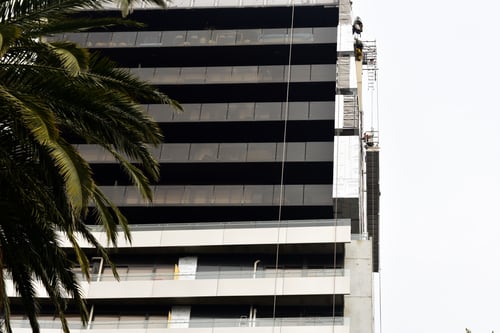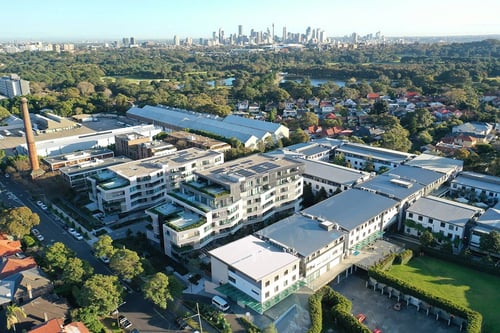In Australian commercial building design, managing condensation has become increasingly critical with the rise of stringent energy efficiency standards and global climate commitments. Fairview's technical team have written and released a white paper on Condensation and Moisture Management within Rainscreen Systems, which teaches the critical importance of condensation and moisture control in creating healthy buildings. It also highlights effective methods to ensure long-term durability through effective cavity system management.
Condensation Management
Condensation management in Australia is complex due to the diverse climatic conditions and evolving building practices, including:
Airtightness:
Modern practices focus on airtightness for energy efficiency but can trap moisture if not managed properly. Recent changes to the National Construction Code (NCC) have improved energy use but increased moisture risks.
Ventilation:
Enhanced airtightness reduces natural ventilation, raising humidity and condensation risks. Historical reliance on passive ventilation is less feasible under new standards.
Climatic variations:
Australia's varied climates, from tropical to alpine, require different condensation management strategies. Cooler densely populated southeastern regions face challenges with trapped internal vapor.
Building materials and design:
Effective sarking and rainscreen design are crucial. Sarking’s vapour permeability must be suited to local conditions, with the NCC using a Climate Zone Map to set these requirements.
Typical conditions found across South-East parts of Australia

Selecting the right sarking is important to ensure the adequate management of moisture movement in and out of the building.
Water vapour escaping into the rainscreen cavity
Once moisture passes through the wall, it enters the cavity between the sarking and facade. If this moisture is not removed, it poses a health risk to the building and most current sub-framing does not allow for proper venting of the cavity.
Changes to the NCC
From October 1st, 2023, the NCC mandates Class 4 membranes (Min .1.140 μg/N.s) for Zones 6, 7 & 8 and Class 3 membranes (Min. 0.143 μg/N.s) for Zones 4 and 5, with Class 4 also accepted in these areas. Many existing membranes no longer comply due to these new standards.
Fairview’s Vitrafix Wall Sarking and Vitrafix Wall Sarking Ultra meet and exceed these Class 4 requirements, offering durability, UV resistance and ease of installation.
Rainscreen Systems
he rainscreen cavity manages moisture through passive methods like convective circulation and gravitational drainage, aided by vapor-permeable membranes. Effective moisture control requires ventilation openings at the cavity’s top and bottom, and drainage pathways to prevent water pooling.
Traditional sub-framing components, such as horizontal top hats, can hinder airflow and drainage, reducing the system’s drying efficiency. To overcome this, Fairview offers Vitrafix perforated sub-framing products, including the Vitrafix Top Hat and S Batten, which enhance airflow and drainage while maintaining structural integrity, making them suitable for various façade systems.
Traditional top hats create an obstacle for air flow and moisture drainage

New Vitrafix Perforated Top Hats overcome the problem, creating air/moisture pathways through the top hat

To read the full white paper on Condensation and Moisture Management within Rainscreen Systems, click the button below, or contact the Fairview team here.



